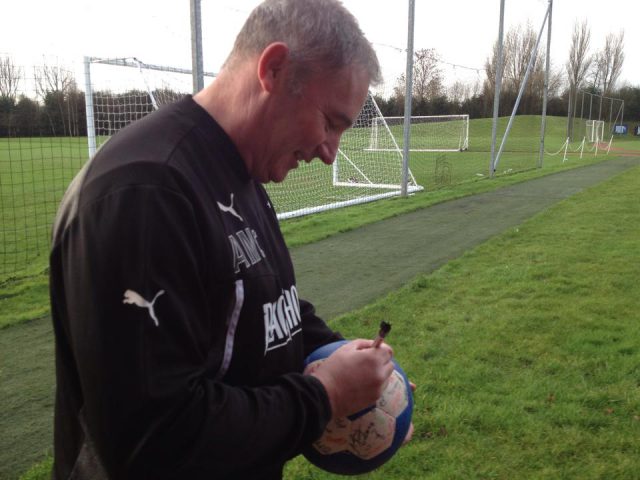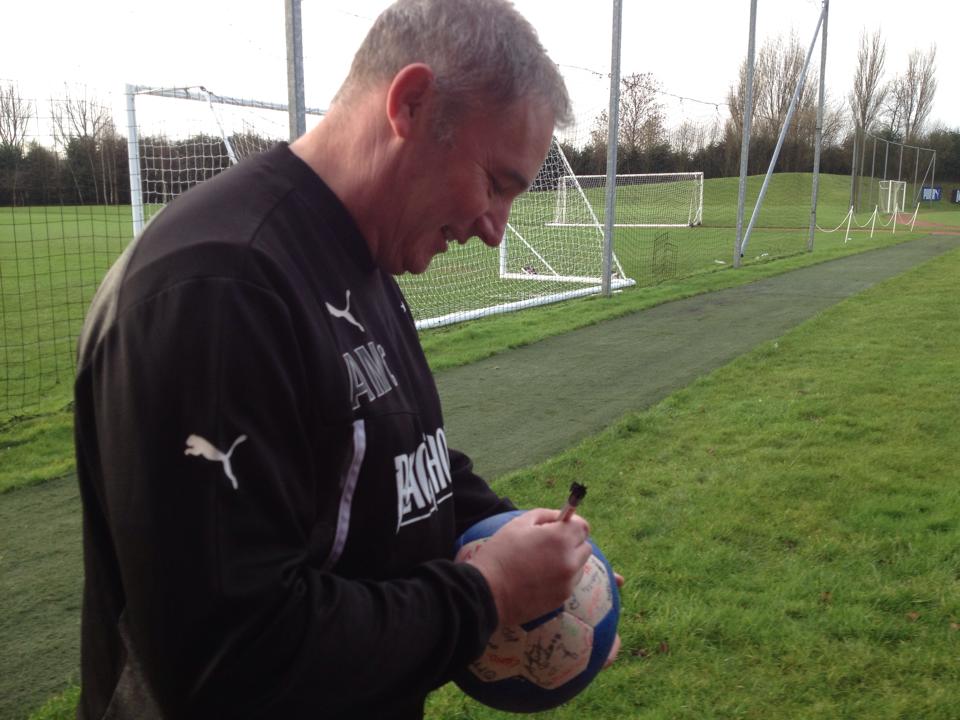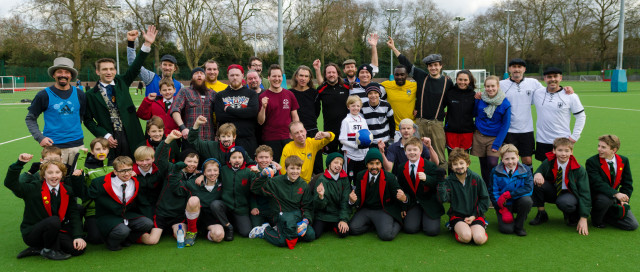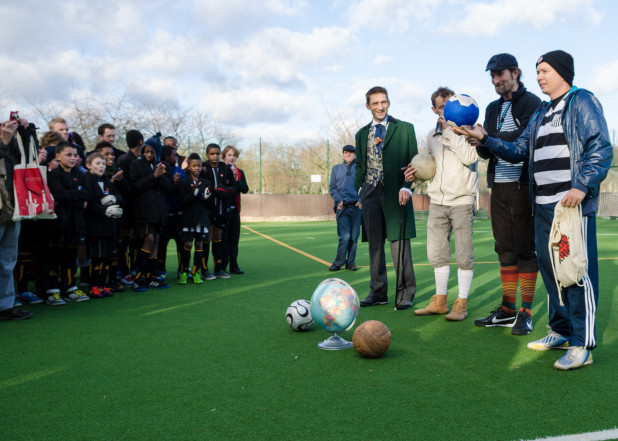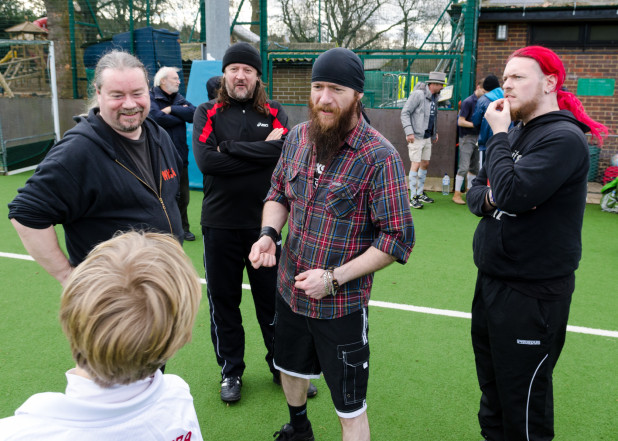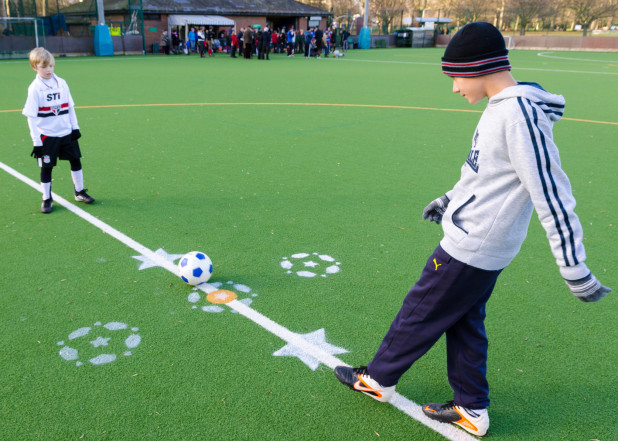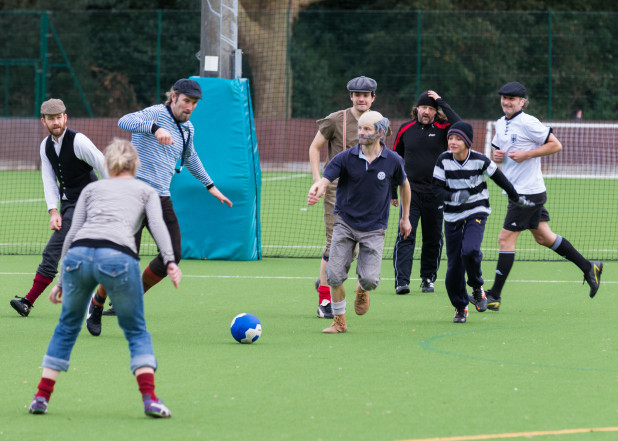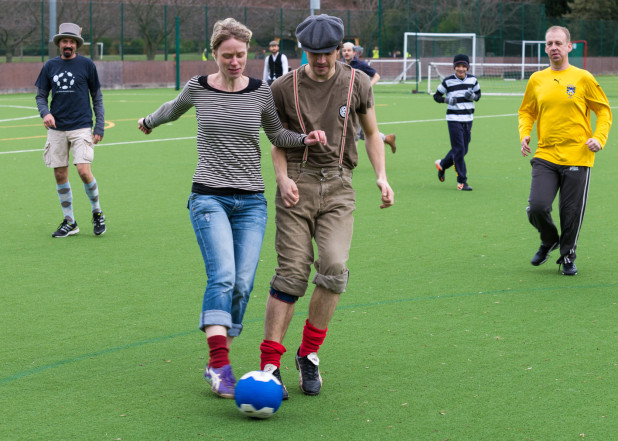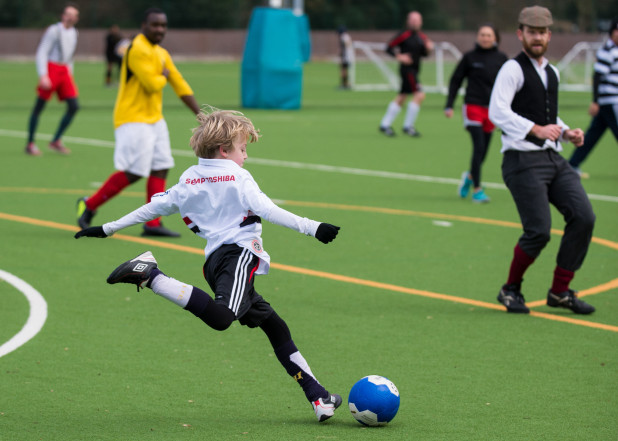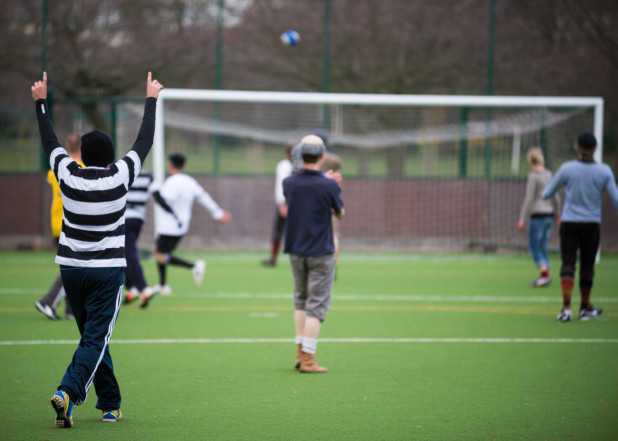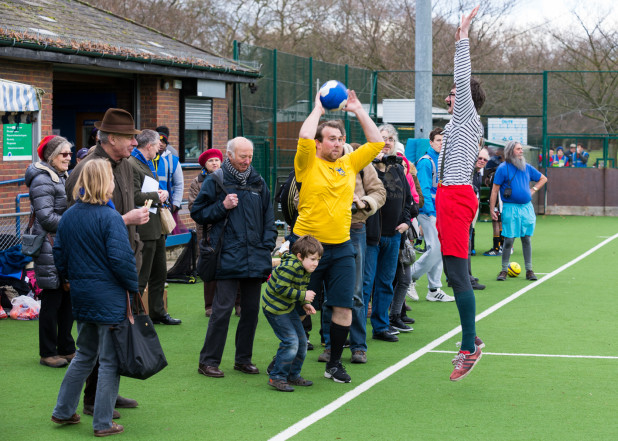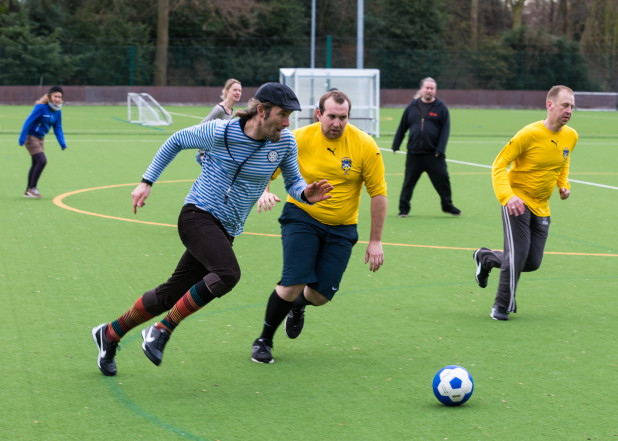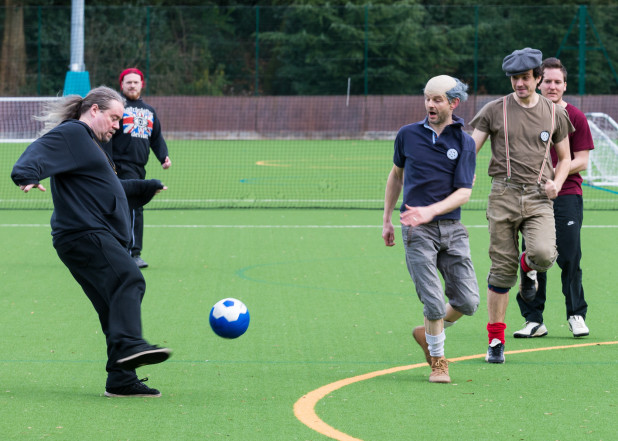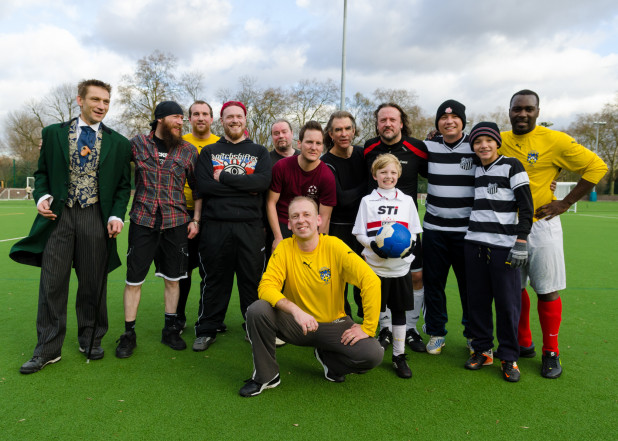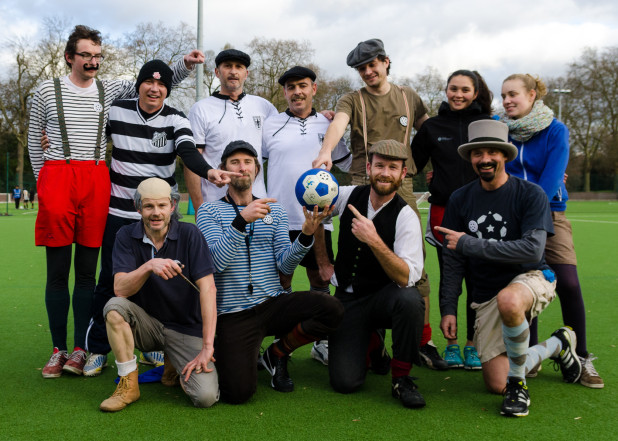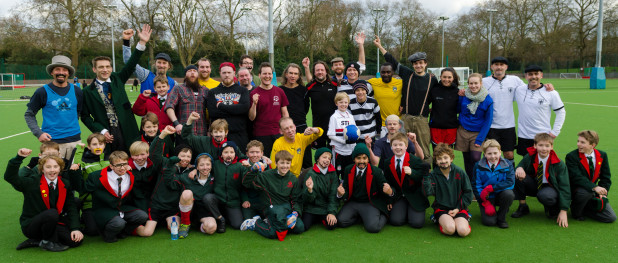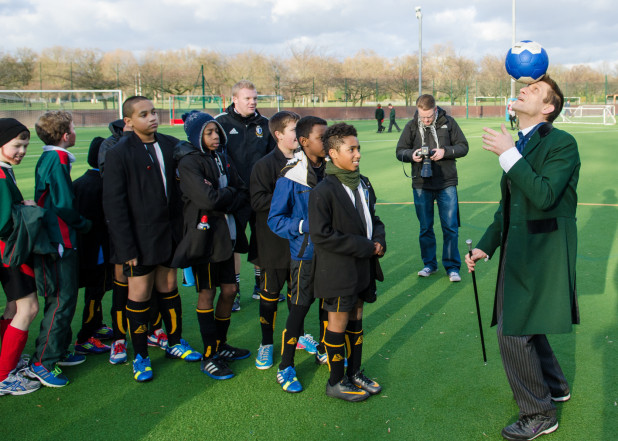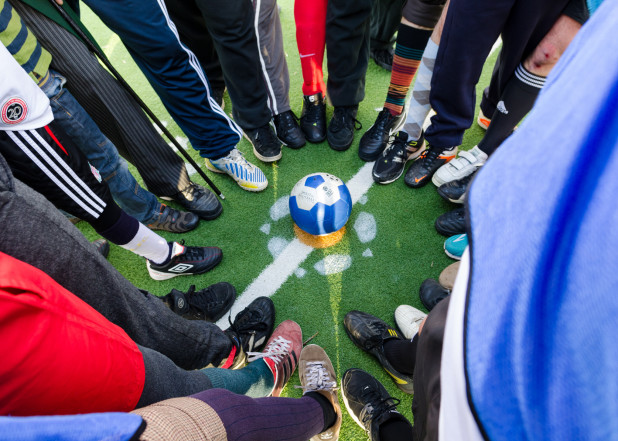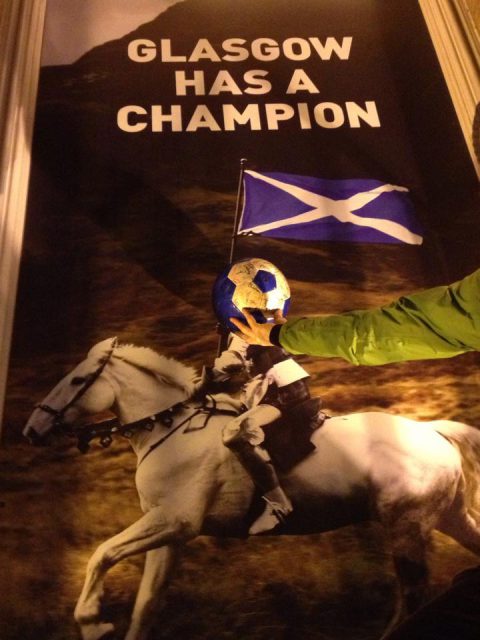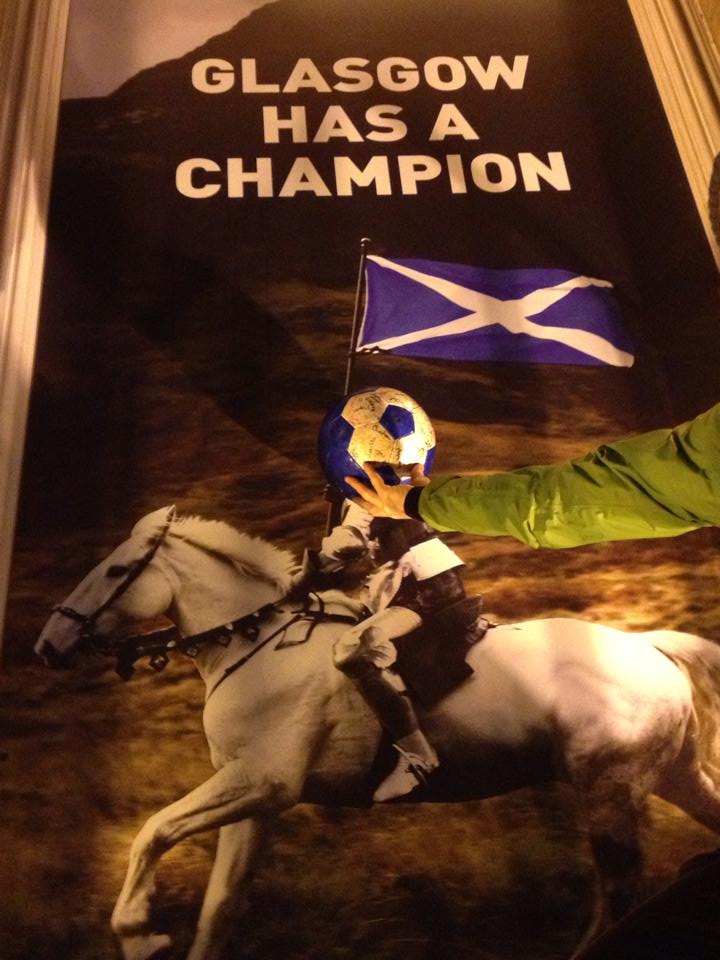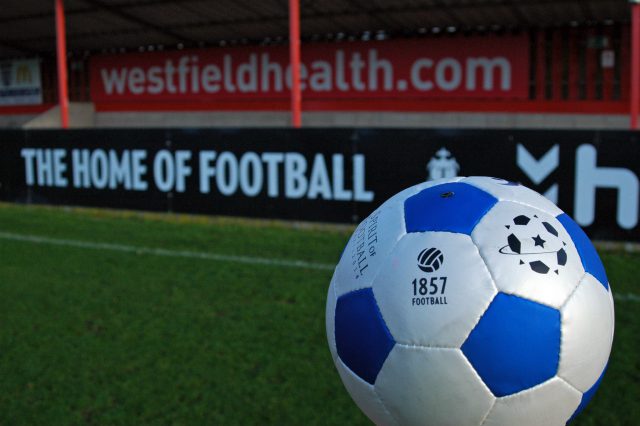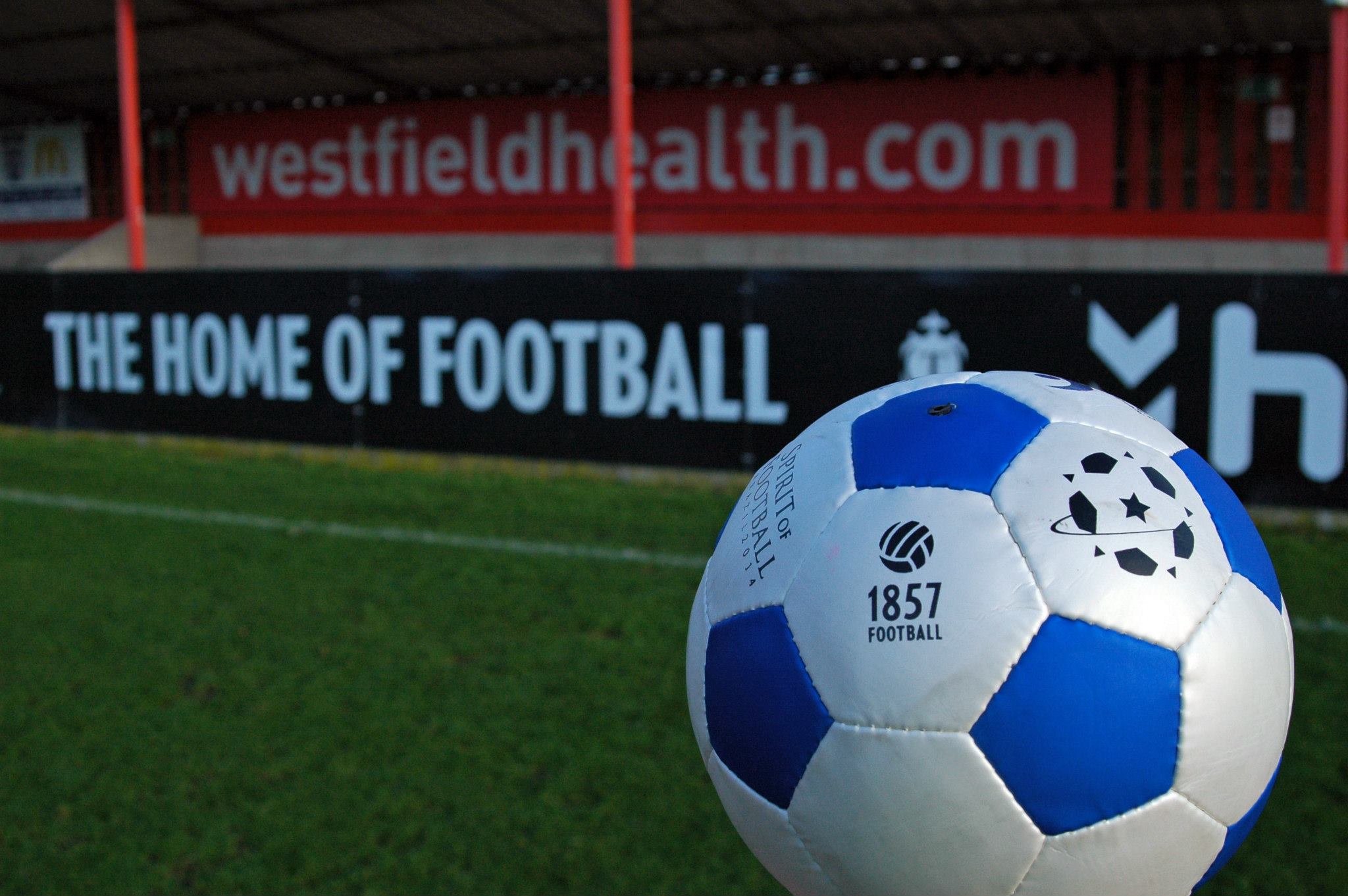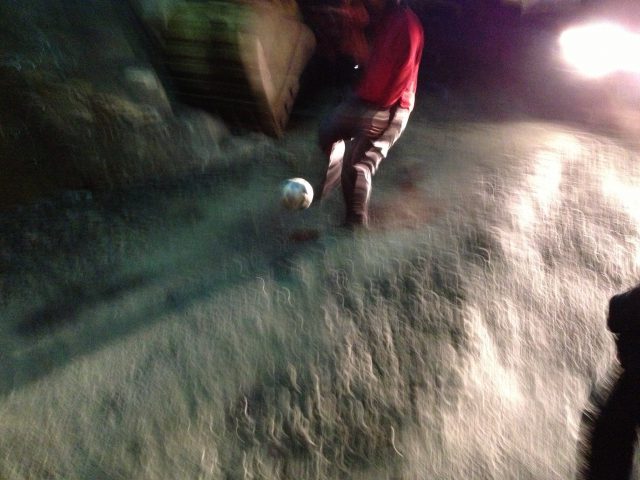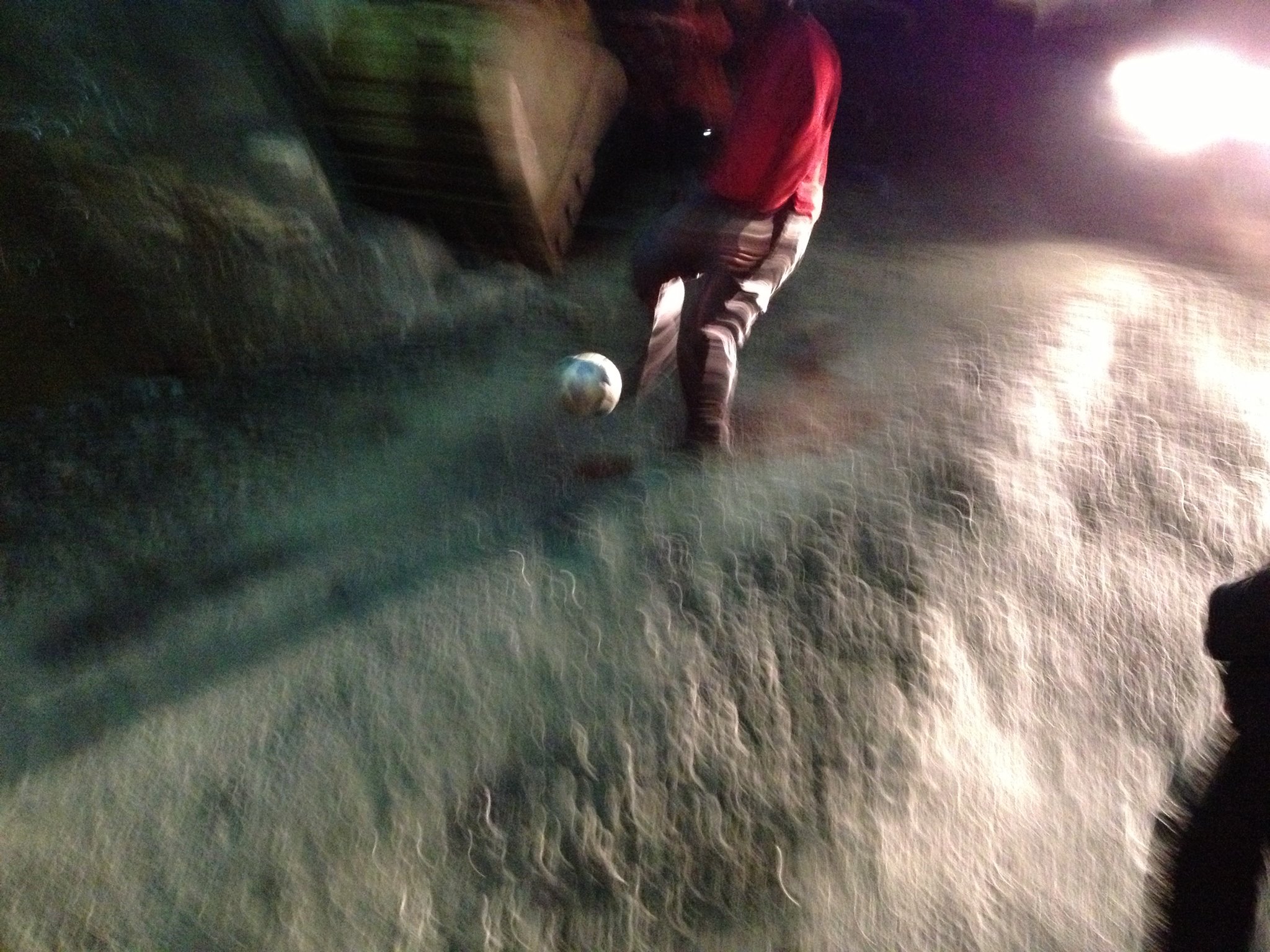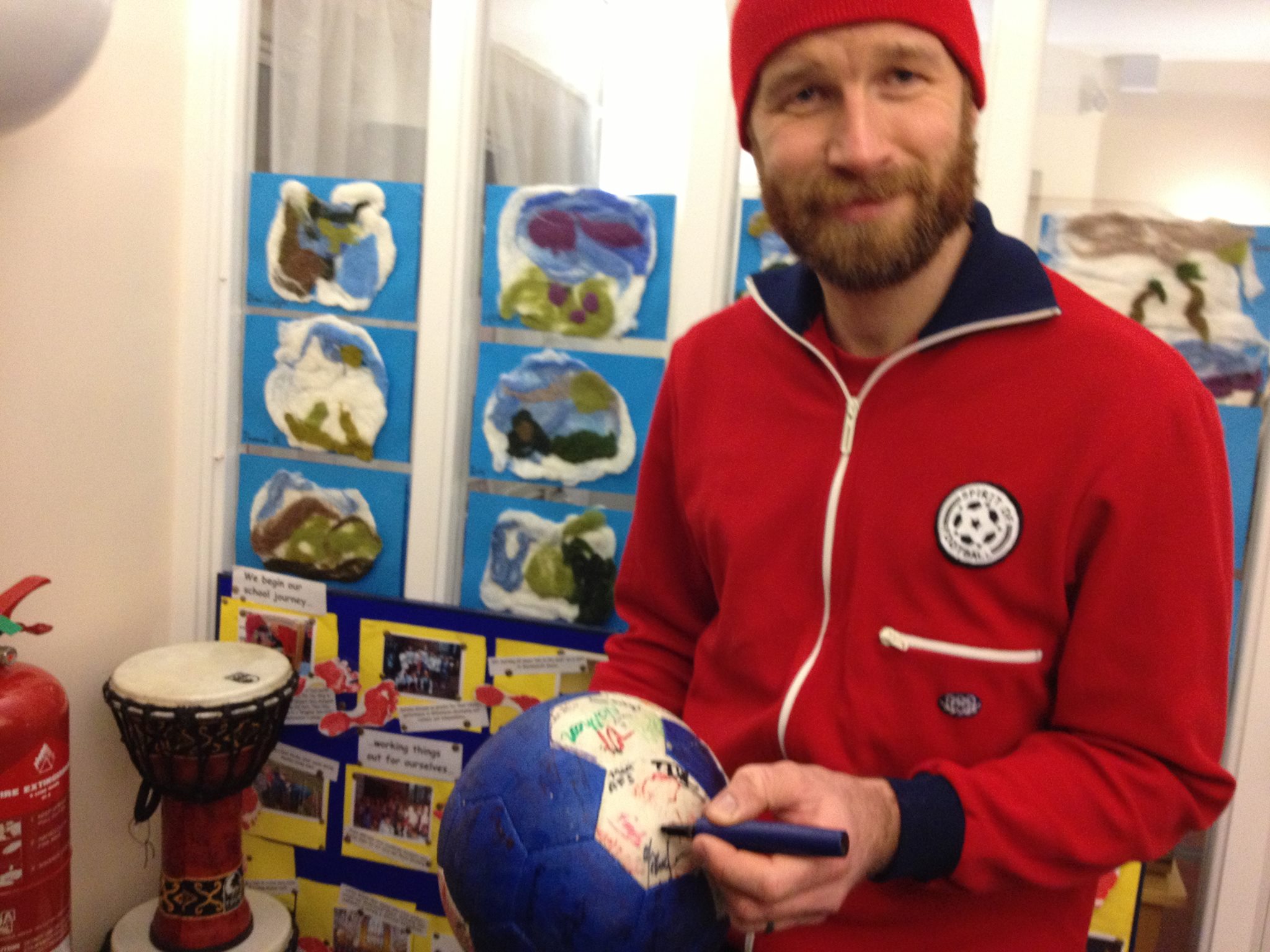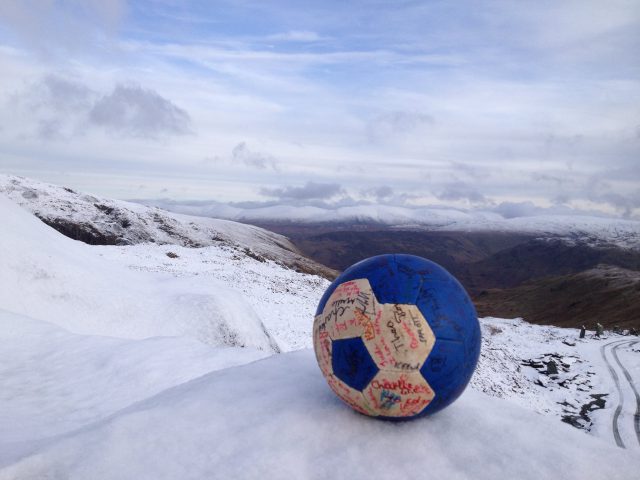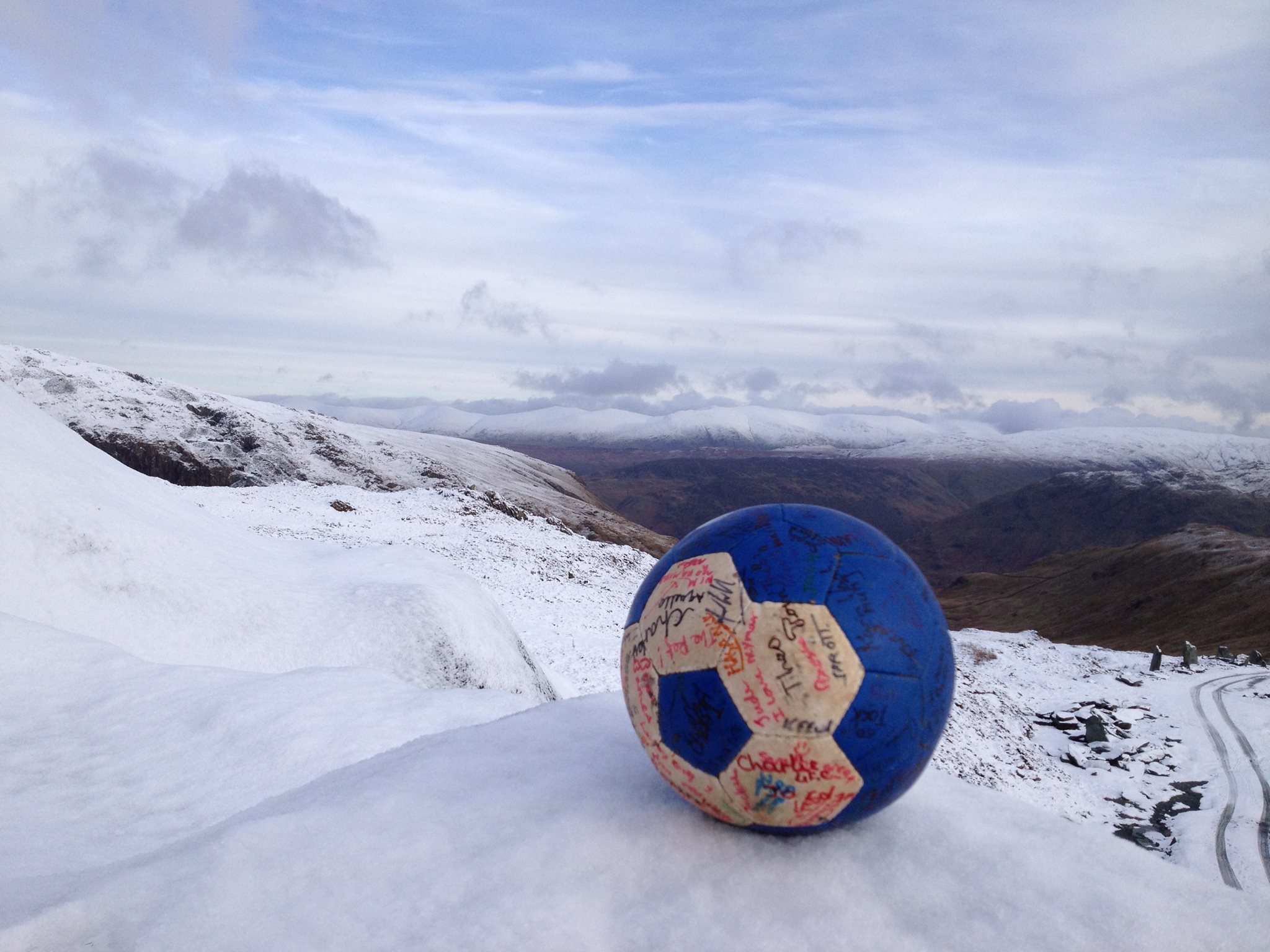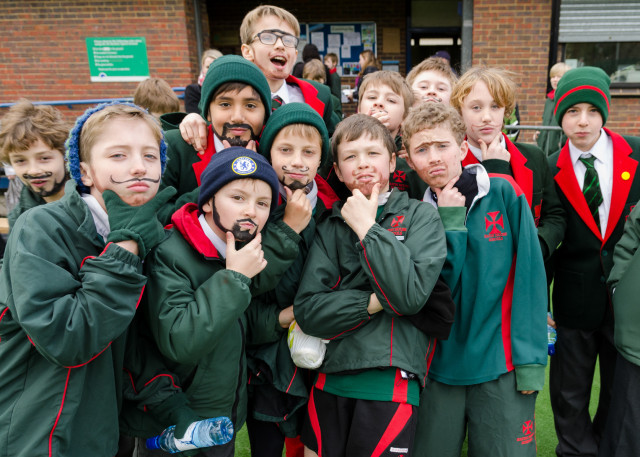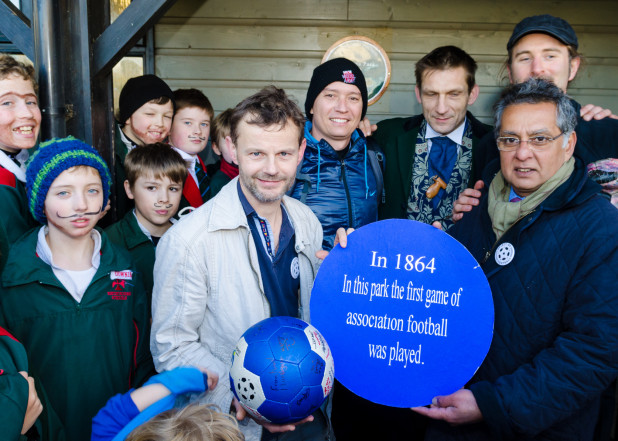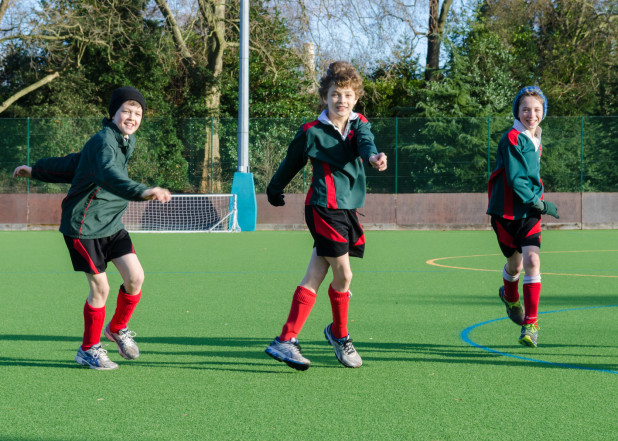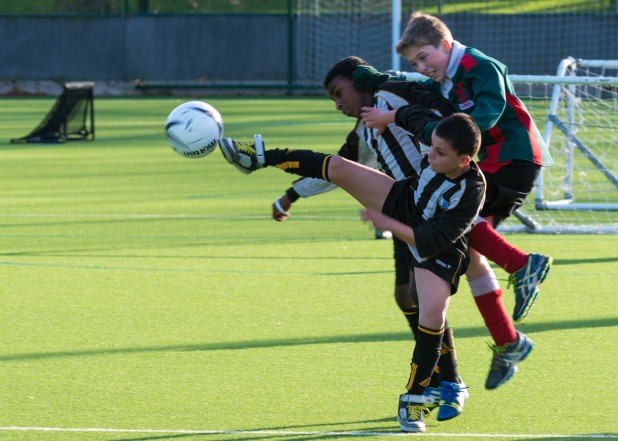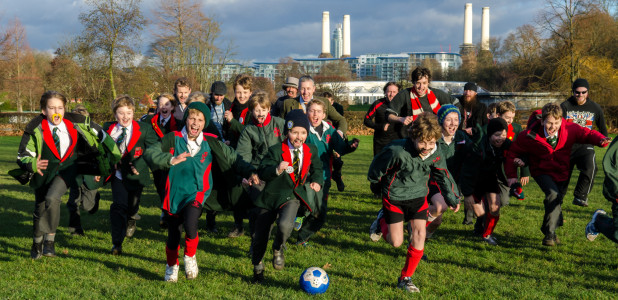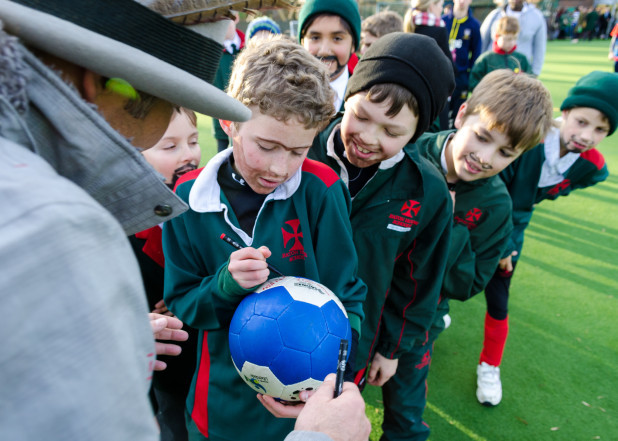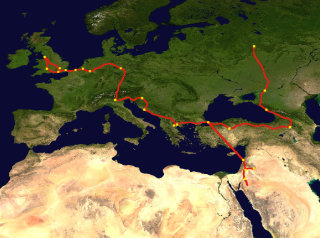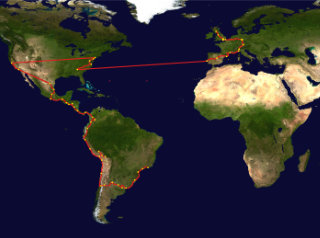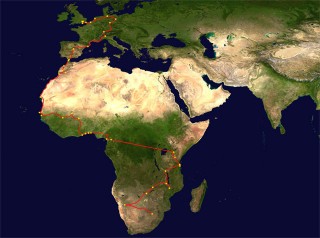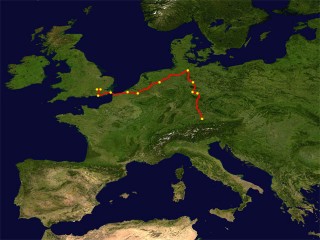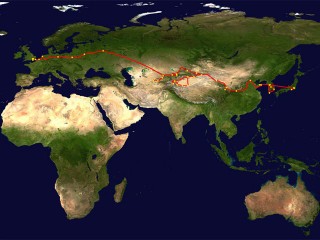Scotland legend Ally McCoist signs The Ball at Rangers FC in Glasgow… The Ball Day 8…
Players gathered in Battersea Park, London from all over the world — from Brazil, New Zealand, Germany, Yemen, Brighton and Bradford — to commemorate the 150th anniversary of the first official game played there under the new Football Association rules. Back in 1864, the exhibition match boasted teams consisting of the best football players there were. This time around, the expectations of a great game were no less lofty.
The players divided into two teams of 11, three less per side than in the original game, but this was absolutely fine since the captains agreed to the number. On one side, the Brazilian contingent led by Fernando Godoy, allied with the members of New Model Army, looked sharp and promised much. On the other, the German contingent led by Andrew Aris, along with sundry others including Phil Wake — a veteran of three previous kick-offs — had the greater experience. Who would prevail?
The coin was tossed, Fernando chose heads but it landed tails. Andrew chose to play from the half his team was already in and so Fernando was obliged to kick off. The whistle blew and mayhem ensued. In 1864, there was no referee because no-one imagined that gentlemen could not agree a solution when disputes occurred. The 1863 rules, however, make no mention of a referee, so it wasn’t technically an infringement for me to help proceedings along against a backdrop of shouts from crowd and players alike of “Oi! Ref! Get a new monocle!”
The tendency to pass the ball forward to a team-mate — indeed the ungentlemanly tendency to pass at all, an unsavoury habit ingrained through years of playing the modern game — seemed the most common infringement, though my whistles were largely ignored. Yet, as the game progressed, the players began policing themselves and gentle reminders to team-mates to pass backwards proved more effective than my own protestations.
Both teams adopted a long-ball game, a tactic popular on these shores to this very day — even the highest levels. It worked better for Fernando’s team who had the benefit of two young ringers named João Pedro and Callum running rings round Andrew’s relative veterans. Indeed, so successful a tactic was it that it led to the first goal, scored by Joao with a lofted shot that passed between the posts about 5 metres over the new-fangled — and for this game meaningless — “crossbar”.
Much spectator hilarity derived from the outside-the-touchline scuffles and shambolic throw-ins guaranteed by Rule 5:
“When the ball is in touch, the first player who touches it shall throw it from the point on the boundary line where it left the ground in a direction at right angles with the boundary line, and the ball shall not be in play until it has touched the ground.”
This amusing yet perilous clause — along with its twin that deals with the goal line — were later dropped from the rulebook, presumably at the request of the sport’s less hardy onlookers, faced as they were at any given moment by the prospect of serious injury.
Although goalkeepers were not introduced until 1870, Justin Sullivan performed two miracle headers in front of goal to deny Andrew’s team the goal they sought. Calling “mark” might have been tactically better, since a free kick would have been awarded from the point at which the ball was caught, but Justin’s headers were far more deserving of a slow-motion action replay. Whatever that is.
Throughout the game, both Fernando and Andrew made powerful dribbling incursions into opposition territory that were a constant threat. But it was one of Andrew’s surging runs combined with Phil’s combover, which seemed to behave like a 12th player, that caused so much consternation and pressure that it eventually led to an equaliser.
After changing ends, as of course one does after each goal, play resumed with renewed vigour from both sides. Further goals were scored by Mike Dean for the Brazil/NMA alliance and Andrew (again) for the Spirit of Football veterans as the commemorative game ended a 2–2 draw.
After the game everyone, players and spectators alike, crowded round to sign The Ball, though everyone had to prove they had kicked or headed it before they signed. Orderly and civilised queues formed in gentlemanly fashion as the first of what will without doubt be many thousands of signatures were inscribed on The Ball.
A final word about the pitch which the groundsmen prepared so beautifully for the game: 150 years after the first official game played under the 1863 rules, a match using those rules finally took place on astroturf.
Glasgow has a new Champion…
The Ball 2014 on top of a mountain and down a mine = a marvellous game of two halves…
News & Star | News | Football matches at mine with ball on journey to Brazil World Cup
newsandstar.co.uk
Wednesday, 15 January 2014 By Karen Evans Last updated at 13:15, Wednesday, 15 January 2014 Slate and snow provided a unique backdrop for two five-a-side football matches with a ball on an epic 30,000km journey to the World Cup.
Ian from the tartanarmy @ the Site of the first ever international football match…
The Ball 2014 at Sheffield FC – Monday 13 January 2014
Spirit of Mine Football with The Ball 2014 in the Honister Slate Mine
Spirit of Football would like to thank our friend Tim “The Boy” Noble for setting up an outstanding Mine-blowing Snow-Ball experience in Cumbria earlier today. Thanks Tim! See you in 2018.
The Ball 2014 Day 6 in Cumbria – England`s equivalent to the South Island of New Zealand. One Ball, One World
This send-off of The Ball was the first I had been to. I don’t know what the others were like but I imagine that this one was the biggest because there were so many other parties present. For years the stalwarts of Spirit of Football have been doing their bit to give Battersea Park its due in the extraordinary story that is association football but this year a perfect storm of local activism and serendipity came together to get a plaque erected in the park. Year 7 of Eaton House, Clapham played a small but relevant role.
In the run-up to Christmas we put on something that was billed as a Nativity Play. This was to wrong-foot the rest of the school who were nosey to know what we were doing with sombreros, French berets, Jimmy hats etc. However, the butter-wouldn’t-melt-in-their-mouths Year 7s did not tell a complete lie… after all, nativitas is just the Latin for birth. But when the boys revealed what was in the baby’s crib, it was not a doll of baby Jesus but a mucky old football. Following this theme of Christmas, in order to counter the claims of the above nationalities, they invoked not the Ghost of Christmas Past but Football Past, one Ebenezer Morley, to explain how football — as we know it — was born not only in England but within our very borough. The climax of the little play was when Ebenezer Cobb Morley bade us farewell along with his physician, another time-traveller by the surname of Who, asking the audience to erect a blue plaque in the park to commemorate the historic launch of association football.
Alas, despite the play’s success, or at least appreciation by a somewhat lost audience, its impact would have been of very little consequence. What made the difference were our esteemed guests from the Wandsworth Society, the International Football Institute and the Friends of Battersea Parks. The latter in particular got busy contacting the Spirit of Football and using their not inconsiderable clout (albeit the softest of power) with the worthy folk who run the council.
The day itself was great fun, a mixture of eccentricity and enthusiasm, probably not unlike our noble predecessors 150 years ago. The boys played their own part in five-a-side matches against Battersea Park School who were an equally nice lot.
Thereafter they added to the general festival fair feeling of the event by rushing around like only those who are half human-half labrador can. This culminated in the glorious run-up to kick the Ball.
It was a great event and my hearty congratulations to Spirit of Football and the local bodies involved. Let us hope that this year represents the beginning of a take-off period whereby it gathers greater and greater momentum. It is certainly something the people of London and indeed England should take pride in.
Written by the Manager — A G Sprott, Head of Latin and Year 7 form tutor at Eaton House.
Photos used with kind permission of Jonathon Vines.


